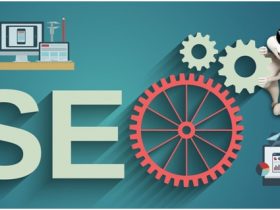The tech world is all about data. Data, data, data. Data is “king”. This system will give you all the data you need. This software will make collecting data easy. And on and on.
The real question though is “How can I actually use my data?” Data is supposed to be useful. It is meant to improve your business, help you decide on the right direction to take to increase revenue and grow. It’s also meant, more importantly, to save you time and money. And we all know any business always needs more time to do things, and more money to do them!

More often than not, we all have data overload and we don’t end up actually doing anything with it. Usually this is because we don’t know what we’re meant to look for, and we aren’t using the right tools to analyze it productively.
Step 1: Use a system that gathers your data and helps you re-purpose it effectively.
Finding a software solution to your business can be frustrating. There are always a ton of options out there, and finding the one that gives you the features you need, at the price you can afford can be difficult.
Finding a system doesn’t have to be stressful. Consider the following:
- Write down a list of your “needs”, “wants” and “would be nice” features.
- Do some research. See what people in your industry are using and make a list of 3-4 options.
- Request demos from each software so you can learn more about it. Have your list of “needs” with you so you can ensure each option has what you NEED. Eliminate any that don’t.
The #1 need is to have a software that will allow you to gather the data you want to understand and learn from, and provides analytical tools to glean actionable information within the same platform.
Step 2: Ask the right questions!
Once you have your data and some tools to analyze it, now what?
The biggest help for businesses in data analysis is applying a marketing lens to it. After all, understanding client behavior, client or lead statistics and performance metrics are all towards one goal: growing your business and improving your offerings.
In order to do this, you need to FIRST ask the right questions in order to get the data you need.
This looks different for every business. It could be a survey you send out before, during or after an event that will help you to understand: where clients came from, how they heard about you, how they’d rank your business, a staff member or your products, and so on.
Understand first what you want to know, and then use technology to ask the question for you. Then you can use reporting and statistical tools from your software to answer your questions.
Step 3: Use your data!
Many businesses running marketing campaigns want to understand the success of different campaigns. Having a database with a data field for “how they heard about you”, makes running a report easy!
Example: Where do my clients come from?
Once you have all of this data, make a pie chart or an excel document. In theory your software will do this for you. Then take a look! If you are spending $1,000 a month on Facebook ads, but only 5% of your clients heard about you through Facebook: maybe you need to reappropriate that money to a more successful platform.
Using data in this way not only helps you to target more effectively with your marketing, it saves a ton of time and money that would otherwise be wasted on failed campaigns or ineffective platforms.
Example: Client Demographics
Other ideas to use your data: create an average client profile. What is the average age of your clients. Male or female? Location? Understanding the demographics of your clients, then targeting the demographic effectively is much easier.
Summary
Don’t be overwhelmed when you think about all of your “data” and how you are going to use it to make decisions.
Starting with Step 1: finding a software that makes collecting data, and getting the information you really want and need, is the biggest hurdle. Once you have that, use the tools at your disposable to filter and create reports that service a purpose: finding the value in your marketing, viewing your financials, etc.
Collecting a whole lot of data is great! And using it to grow your business and keep your team in the loop, not only saves you time and money, it will help you grow!
Author: Asaf Darash
Bio: Asaf Darash is the founder of Regpack, an online registration system used by more than 5,000 organizations worldwide including the NFL, Goodwill and Stanford. Regpack’s technology is based on Asaf’s Ph.D. that dealt with computer data connections and networks and is the foundation for the flexibility of the Regpack system.
























